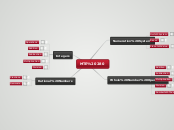MTE 280
Numeration Systems
Our System
We use a system of counting to know the quantity or how much we have of something. We use symbols to represent a quantity. Ex. Tally System.Ten is most important because our system is a decimal system.Our own counting system is called Hindu-Arabic because we use those symbols.So we use the digits: 0, 1, 2, 3, 4, 5, 6, 7, 8, 9.
Bases
Base 12 system: 1, 2, 3, 4, 5, 6, 7, 8, 9, X (dec), E (el) ,10Base 5: 0, 1, 2, 3, 4Base 3: 0, 1, 2Base 10: 0, 1, 2, 3, 4, 5, 6, 7, 8, 93104Word form: threeonezerofour base fiveExpanded form: 3(5)^3+1(5)^2+0(5)^1+4(5)^0Underlined digit: 3104 base fiveValue of digit: 1(5)^2Convert to base 10: 375+25+4= 404 base 10
Place Value
Place value is determined by the position of the symbolThe position determines the valuepositional decimal system: the placement of the symbol has meaning
Whole Number Operations
Addition
Closure property of addition: adding any two whole numbers, the sum is always a whole number. Ex: 5+3= 8 addend+addend=sumCommutative property of addition: When adding numbers, changing the order of the addends will result in the same sum. Ex: (a+b=b+a) Associative property of addition: When adding three or more numbers, the grouping of the numbers will not change the sum. Ex:a+(b+c)=(a+b)+cIdentity property of addition: When adding zero to a number, the number will be the same. Ex: a+0=a=0+aDecomposition is a strategy because it's flexible.Open number line is a strategy.Compensation is a strategy.Compensation example:48+3350+33=8383-2=81Algorithms:Partial sumsPartial sums example:48+3370- tens place11- ones place=81Expanded Notation
Subtraction
Closure property of subtraction: the minuend-subtrahend+= differenceDecompositionCompensationOpen number line- strategyCounting backExpanded notation-algorithm
Multiplication
Closure property of multiplication: If you multiply any two whole numbers, your product is a whole number. Ex: 4x8= 32Commutative property of multiplication: Changing the order of factors gives you the same product. Ex: 3x2=6 2x3=6Associative property of multiplication: Changing the grouping around of three or more factors gives the same product. Ex: (2x1)x3=2x(1x3)Identity property of multiplication: Multiplying a factor by one gives you the same product. Ex: 1x7=7 7x1=7Zero property of multiplication: When multiplying a factor by zero, the product will always be zero. Ex: 7x0=0 0x7=0DecompositionOpen area strategy OR multiplication: area modelPartial products- algorithm
Division
division: partition modelknown: the given number of quantity and groupsunknown: the number or amount in each groupdivision: measurement modelknown: the given quantity and the number in each groupunknown: the number of groupspartial quotients- algorithm short division- algorithmdecomposition- strategy
Number Theory
prime number: a number that has two different factors, only 1 and itselfcomposite number: a number that has more than two different factorsmultiple- result of multiplying a number by an integer
Integers
Operations
The chip method can be used to help visualize the integers. The red side of the chip is the negative representation. The yellow side is the positive representation.Absolute value is the distance from the number to zero.A number line can be used to visualize the integers.Order the given lists of integers from least to greatest.1. 9, -13, 4, -4, 5, 11solution: -13, -4, 4, 5, 9, 11
Addition
-4+7= 3 four negative chips plus seven positive chipsset model of additionwe can use a number line to illustrate the addition problems
Subtraction
7-4=3seven positive chips take away four negative chipsWe can also use a number line to illustrate a subtraction problem.Example:-5 - (-2)= -3Five negative chips take away two negative chips
Multiplication
Repeated Addition model for multiplication3x4= 12 3 groups of 4Pattern method can be used to solve these problems.Example: (-3) x (4) = -122 x 4=81 x 4=40 x 4=0-1 x 4= -4-2 x 4= -8-3 x 4= -12
Division
We can use the partition model of division to solve these problems or we can use inverse operations and the pattern method.12/4 = 3four groups of 3Inverse Operations and Pattern Method:12/ (-4)=Fact family: 12/4=3, 12/3=4, 4 x 3=12, 3 x 4=12n (-4) = 12 --- Inverse operation2 x (-4) = -81 x (-4) = -40 x (-4) = 0-1 x (-4) = 4-2 x (-4) = 8-3 x (-4) = 12
Rational Numbers
Fractions
three different modelsarea modellinear modelset modeluse benchmarks such as 0 , 1/2, and 1 to compare fractionsmay compare using:closeness to 1/2 and 1common denominator
Decimals
1.Five hundred, fifty-five and three tenths : 555.32.Twenty-four and ninety-seven hundredths : 24.973.Two and forty-two thousandths : 2.042examples where decimals can be used: money, grading, measurementsFlat= 1Long= 1/10Unit= 1/100Expand 4724 (10)^2+ 7 (10)^1+ 2 (10)^0
